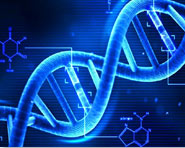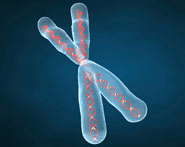


 النبات
النبات
 الحيوان
الحيوان
 الأحياء المجهرية
الأحياء المجهرية
 علم الأمراض
علم الأمراض
 التقانة الإحيائية
التقانة الإحيائية
 التقنية الحيوية المكروبية
التقنية الحيوية المكروبية
 التقنية الحياتية النانوية
التقنية الحياتية النانوية
 علم الأجنة
علم الأجنة
 الأحياء الجزيئي
الأحياء الجزيئي
 علم وظائف الأعضاء
علم وظائف الأعضاء
 الغدد
الغدد
 المضادات الحيوية
المضادات الحيوية|
Read More
Date: 27-8-2021
Date: 24-9-2021
Date: 24-9-2021
|
Eukaryotic DNA Replication : Eukaryotic cell cycle
The process of eukaryotic DNA replication closely follows that of prokaryotic DNA synthesis. Some differences, such as the multiple origins of replication in eukaryotic cells versus single origins of replication in prokaryotes, have already been noted. Eukaryotic origin recognition proteins, ssDNA-binding proteins, and ATP-dependent DNA helicases have been identified, and their functions are analogous to those of the prokaryotic proteins previously discussed. In contrast, RNA primers are removed by RNase H and flap endonuclease 1 (FEN1) rather than by a DNA pol (Fig. 1).
Figure 1: Proteins and their function in eukaryotic replication. ORC = origin recognition complex; MCM = minichromosome maintenance (complex); RPA = replication protein A; PCNA = proliferating cell nuclear antigen; FEN = flap endonuclease.
Eukaryotic cell cycle
The events surrounding eukaryotic DNA replication and cell division (mitosis) are coordinated to produce the cell cycle (Fig. 2). The period preceding replication is called the G1 phase (Gap 1). DNA replication occurs during the S (synthesis) phase. Following DNA synthesis, there is another phase (G2, or Gap 2) before mitosis (M). Cells that have stopped dividing, such as mature T lymphocytes, are said to have gone out of the cell cycle into the G0 phase. Such quiescent cells can be stimulated to reenter the G1 phase to resume division. [Note: The cell cycle is controlled at a series of checkpoints that prevent entry into the next phase of the cycle until the preceding phase has been completed. Two key classes of proteins that control the progress of a cell through the cell cycle are the cyclins and cyclin-dependent kinases (Cdk).]
Figure 2: The eukaryotic cell cycle. [Note: Cells can leave the cell cycle and enter a reversible quiescent state called G0.]



|
|
|
|
للتخلص من الإمساك.. فاكهة واحدة لها مفعول سحري
|
|
|
|
|
|
|
العلماء ينجحون لأول مرة في إنشاء حبل شوكي بشري وظيفي في المختبر
|
|
|
|
|
|
|
بالتعاون مع العتبة العباسية مهرجان الشهادة الرابع عشر يشهد انعقاد مؤتمر العشائر في واسط
|
|
|